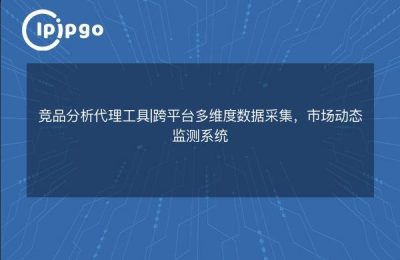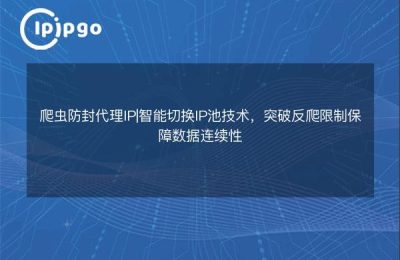
Hey guys, today I want you to talk about how to solve the problem of a proxy IP too slow. I believe that many children's shoes when using proxy IP, often encounter slow connection speed trouble. So, the question is, how do we solve this annoying problem? Please follow me to take a look below!
Check the network environment and turn on the "wifi signal amplifier".
Before solving any problem, first we need to make sure the network environment is good. Sometimes, we complain that the proxy IP is too slow without realizing that our network connection is not good. So, we should check the network status first. If you are using WiFi, you can try to open some "wifi signal booster" software. This kind of software can help you optimize the WiFi signal and enhance the reception ability, so as to improve the connection speed of proxy IP.
Second, change the proxy IP provider, choose a faster server
For the problem of too slow proxy IP, we can also consider changing the proxy IP provider. Different proxy IP providers will have different server quality and response speed. So, we can try other proxy IP providers and choose a faster server.
For example, we can change the proxy IP provider with the following code example:
import requests
proxies = {
'http': 'http://proxy.example.com:8888',
'https': 'http://proxy.example.com:8888',
}
requests.get('http://www.example.com', proxies=proxies)In this way, we can utilize the proxy IP to access the target website, thus achieving the purpose of acceleration.
C. Optimize proxy IP settings and use multi-threading technology
If you are still experiencing slow speeds after changing proxy IP providers, we can also try to optimize the proxy IP settings. A common optimization method is to use multi-threading technology, which means that multiple proxy IPs are used for access at the same time, thus increasing the connection speed.
Below is a sample code that uses multi-threading techniques to optimize proxy IP settings:
import threading
def request_with_proxy(proxy).
# Accessing the target website using a proxy IP
# ...
# Define a list of proxy IPs
proxies = [
'http://proxy1.example.com:8888',
'http://proxy2.example.com:8888',
'http://proxy3.example.com:8888',
# ...
]
# creates multiple threads, each accessed using a different proxy IP
threads = []
for proxy in proxies:
t = threading.Thread(target=request_with_proxy, args=(proxy,))
t.start()
threads.append(t)
# Wait for all threads to finish executing
for t in threads.
t.join()In this way, we can utilize multiple proxy IPs for access at the same time, which improves the connection speed and also ensures the stability of access.
IV. Optimizing the network connection between local devices and servers
In addition to optimizing the proxy IP settings, we can also consider optimizing the network connection between our local device and the proxy IP server. If the network condition between our device and the proxy IP server is good, the connection speed will naturally be improved.
For optimizing the network connection between the local device and the server, we can take the following steps:
1. Ensure that your device is connected to a high-speed, stable network and avoid overcrowded public WiFi;
2. Close unrelated programs and applications to reduce network load;
3. Change of network provider to a more stable and faster network service;
4. Adjust the location of the router to avoid signal interference and improve the quality of the wireless network connection.
To sum up, when we encounter the problem of too slow proxy IP, we can solve it by checking the network environment, changing the proxy IP provider, optimizing the proxy IP settings and optimizing the network connection between the local device and the server. I hope these methods can help you. If you have other good solutions, please share them with me!








